Related Research Articles

Surgery is a medical or dental specialty that uses operative manual and instrumental techniques on a person to investigate or treat a pathological condition such as a disease or injury, to help improve bodily function, appearance, or to repair unwanted ruptured areas.
Stryker Corporation is an American multinational medical technologies corporation based in Kalamazoo, Michigan. Stryker's products include implants used in joint replacement and trauma surgeries; surgical equipment and surgical navigation systems; endoscopic and communications systems; patient handling and emergency medical equipment; neurosurgical, neurovascular and spinal devices; as well as other medical device products used in a variety of medical specialties.

The Thackray Museum of Medicine in Leeds, West Yorkshire, England, is a museum of the history of medicine adjacent to St James's University Hospital. It opened in March 1997 as the Thackray Medical Museum. In 1998 it won "Museum of the Year" and has other awards including in 2004 both the "Excellence in England Small Tourist Attraction of the Year" and "Sandford Award for Heritage Education".
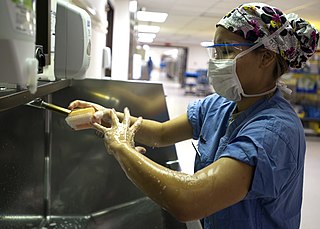
Asepsis is the state of being free from disease-causing micro-organisms. There are two categories of asepsis: medical and surgical. The modern day notion of asepsis is derived from the older antiseptic techniques, a shift initiated by different individuals in the 19th century who introduced practices such as the sterilizing of surgical tools and the wearing of surgical gloves during operations. The goal of asepsis is to eliminate infection, not to achieve sterility. Ideally, a surgical field is sterile, meaning it is free of all biological contaminants, not just those that can cause disease, putrefaction, or fermentation. Even in an aseptic state, a condition of sterile inflammation may develop. The term often refers to those practices used to promote or induce asepsis in an operative field of surgery or medicine to prevent infection.

The School of Medicine is the medical school of the University of Leeds, in the city of Leeds, West Yorkshire, England. The School of Medicine was founded in 1831.

The Royal Infirmary of Edinburgh, or RIE, often known as the Edinburgh Royal Infirmary, or ERI, was established in 1729 and is the oldest voluntary hospital in Scotland. The new buildings of 1879 were claimed to be the largest voluntary hospital in the United Kingdom, and later on, the Empire. The hospital moved to a new 900 bed site in 2003 in Little France. It is the site of clinical medicine teaching as well as a teaching hospital for the University of Edinburgh Medical School. In 1960, the first successful kidney transplant performed in the UK was at this hospital. In 1964, the world's first coronary care unit was established at the hospital. It is the only site for liver, pancreas and pancreatic islet cell transplantation and one of two sites for kidney transplantation in Scotland. In 2012 the Emergency Department had 113,000 patient attendances, the highest number in Scotland. It is managed by NHS Lothian.

Leeds General Infirmary, also known as the LGI, is a large teaching hospital based in the centre of Leeds, West Yorkshire, England, and is part of the Leeds Teaching Hospitals NHS Trust. Its previous name The General Infirmary at Leeds is still sometimes used.
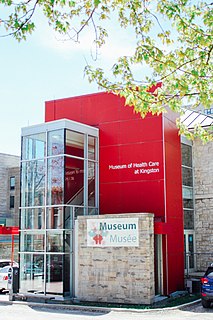
The Museum of Health Care is located in Kingston, Ontario, Canada in the Ann Baillie Building on the Kingston General Hospital site and covers medical history from the 18th century to the modern era. Its research and collection are searchable on-line via their website and online catalogue.

Thomas Michael Greenhow MD MRCS FRCS was an English surgeon and epidemiologist.
Sir John Charnley, was an English orthopaedic surgeon. He pioneered the hip replacement operation, which is now one of the most common operations both in the UK and elsewhere in the world, and created the "Wrightington centre for hip surgery". He also demonstrated the fundamental importance of bony compression in operations to arthrodese (fuse) joints, in particular the knee, ankle and shoulder.
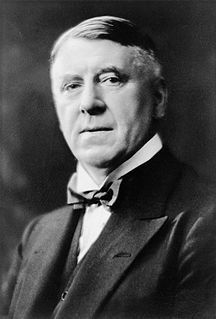
Berkeley George Andrew Moynihan, 1st Baron Moynihan, known as Sir Berkeley Moynihan, 1st Baronet, from 1922 to 1929, was a noted British abdominal surgeon.
Dame Kathleen Annie Raven, DBE, FRCN was a British nurse, matron, government health official, health care engineer, and educational philanthropist.
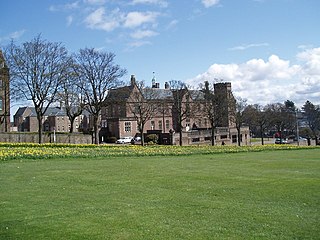
Dundee Royal Infirmary, often shortened to DRI, was a major teaching hospital in Dundee, Scotland. Until the opening of Ninewells Hospital in 1974, Dundee Royal Infirmary was Dundee's main hospital. It was closed in 1998, after 200 years of operation.
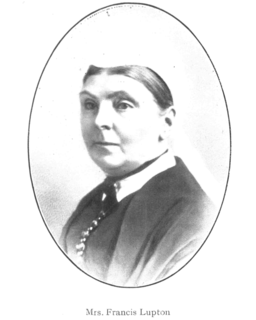
Frances Elizabeth Lupton was an Englishwoman of the Victorian era who worked to open up educational opportunities for women. She married into the politically active Lupton family of Leeds, where she co-founded Leeds Girls' High School in 1876 and was the Leeds representative of the North of England Council for Promoting the Higher Education of Women.

Sir Harry Platt, 1st Baronet, FRCS was an English orthopaedic surgeon, president of the Royal College of Surgeons of England (1954–1957). He was a founder of the British Orthopaedic Association, of which he became president in 1934–1935.
Professor Sir Norman Stanley Williams is a British surgeon and former President of the Royal College of Surgeons of England (2011–14). He was knighted in the 2015 New Year Honours.
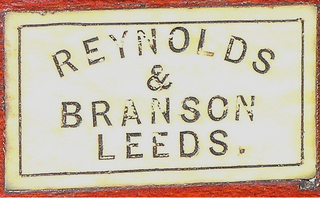
Reynolds & Branson Leeds was a business based at 13 Briggate and 14 Commercial Street in Leeds, England. The business lasted from 1816 to 1972. Edward Matterson managed the company in 1822, and William West F.R.S. took over in 1833. The National Archives Records about the company include a day book, sales ledger, and prescription books. The records were created by Reynolds & Branson Ltd. Reynolds & Branson was registered in July 1898 as a limited corporation with a capital of £34,000 in shares of £10 each by Messrs. R. Reynolds, F. W. Branson. No remuneration was given to Mr. R. Reynolds, but a £700 per annum was given to each of the others. In 1890, Richard Reynold's son, Richard Freshfield (Fred) Reynolds was made a partner. The firm was in the business of wholesale and retail for chemists and surgical instrument makers.

Robin Sydney Mackwood Ling, was an English surgeon who invented the Exeter hip system, a hip replacement. As an orthopaedic surgeon at the Princess Elizabeth orthopaedic hospital, Exeter, he co-operated with an engineer, Dr. Clive Lee from the University of Exeter, to develop a new hip replacement. Their work led to improved quality of life for millions of people.

Alexander Miles MD, LL.D, FRCSEd was a Scottish surgeon who worked at the Royal Infirmary of Edinburgh. He was known for the quality of his surgical teaching, for his role as a medical journal editor and as the author of popular surgical textbooks and books on surgical history. He was elected President of the Royal College of Surgeons of Edinburgh.

Roundhay Hall is a Grade II listed building in Leeds, West Yorkshire, England. Built in the 19th century as a residence for William Smith, the building is now a hospital. The hall is in the Neo-classical style and is a design of Yorkshire architect Samuel Sharp.
References
- ↑ "Thackray Medical Museum". Thackray Museum. Archived from the original on 25 June 2014. Retrieved 11 April 2014.
- ↑ Penny, Wainwright (1993). "Chas. F. Thackray Ltd: suppliers to the surgeons". Socialist Health Association. Retrieved 11 April 2014.
- ↑ "A Clever Mix of Education and Entertainment Makes Learning About Health Choices Fun". Your Family's Health. Archived from the original on 11 April 2014. Retrieved 11 April 2014.